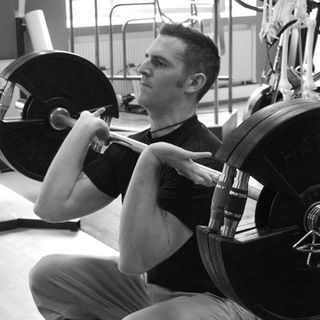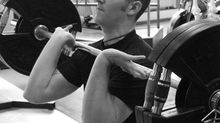Technique Explained: The Clean
- Sean Purchase
- Mar 23, 2016
- 2 min read
Many gym users will train religiously and perform a plethora of bodybuilding style exercises with the aim of seeing (relatively) quick results. This is all good if aesthetics and increasing size is your key objective. If, however, you are looking to get a little more from your training, you will need to look beyond machine based exercises. To improve your performance next Saturday on the football pitch or to get that extra yard of pace down the wing when you play your next vets rugby match, power training needs to become a regular feature of your programme.
Training using the Olympic lifts (cleans and snatches) requires multi-joint movements that recruits a large number of motor units (groups of muscle fibres). Performing these exercises regularly, helps to train your body to recruit these motor units, both systematically and rapidly, resulting in the production of a significant amount of power. The Olympic lifts also replicate the triple extension movement pattern (ankles, knees and hips) that is required for a vast number of sporting activities including sprinting and jumping. As such, they have an excellent transferability to sporting performance and are a must for any athlete looking to use gym based exercises to enhance performance.
The Clean
Start Position
Stand with feet under the bar hip width apart
Grip should be slightly wider than shoulder width
Neutral lumbar curve
Shoulders in front of bar
Chest elevated
First Pull
Back remains neutral and at a constant angle throughout this phase
Bar travels up and slightly back toward lifter
Weight distribution moves back towards heels
Transition Phase
Bar continues upwards
Knees drive forward and move under and in front of the bar
Weight distribution moves towards mid-foot
Shoulder should move to be directly above the bar
Second Pull
Bar continues moving upwards
Knees, hips and ankles all extend powerfully
Powerful shoulder shrug to further increase upward movement of the bar
The Catch
Elbows bend along the line of the bar and move rapidly under the bar
Feet jump outward to stabalise the catch
Rapid pull under the bar
The bar is caught on the front of the shoulders in a front squat position
Stand up with the bar to finish the move
The clean is a complex exercise and these technical coaching points are by no means exhaustive. Please remember to use very light weights when learning a new technique and if you are in any doubt as to how to successfully perform the exercise then ask a fitness professional. Coaching is also available via SPPT!































Comments